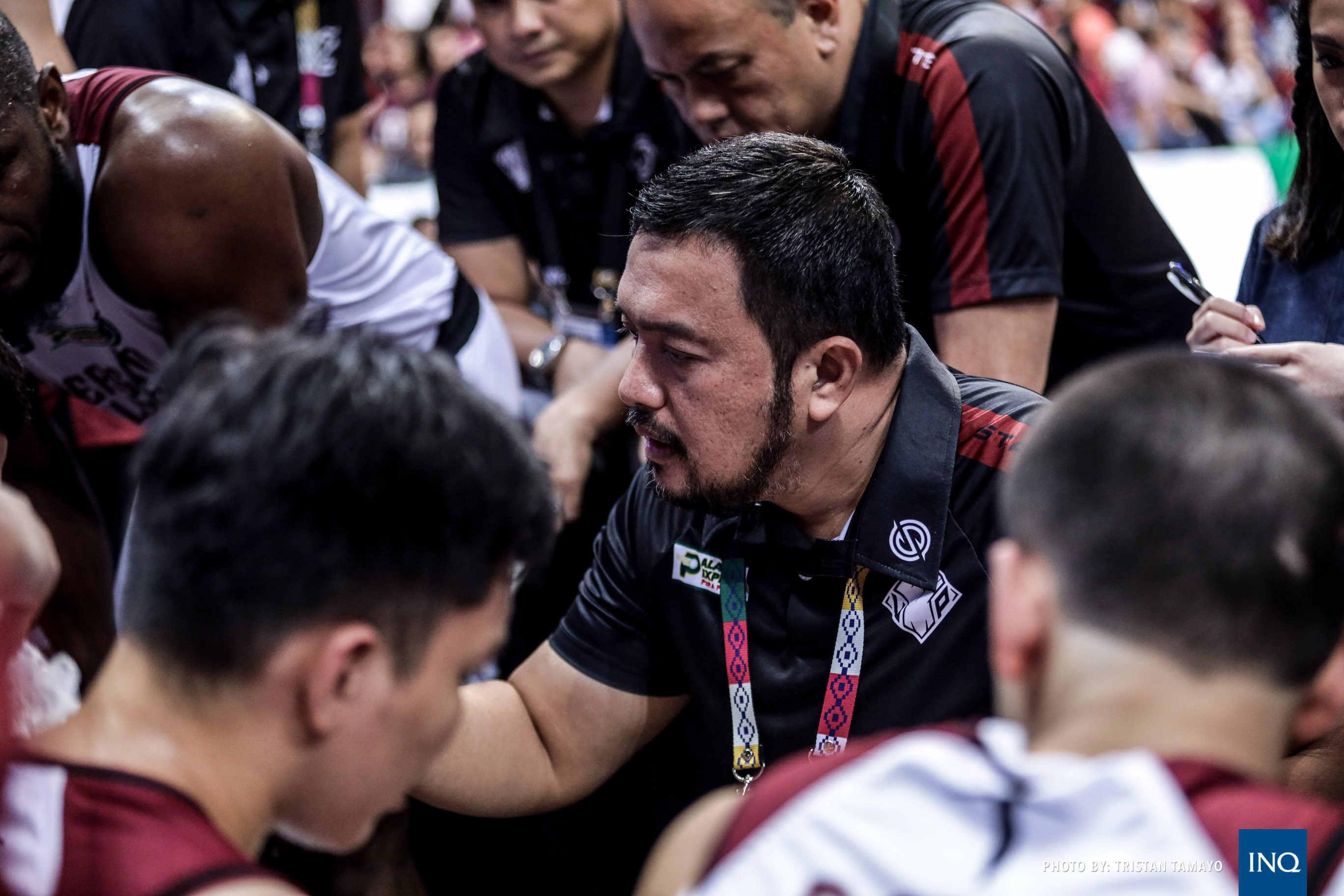
FILE – UP head coach Bo Perasol gives instructions to his players during a timeout against La Salle in the UAAP Season 82 men’s basketball tournament. Photo by Tristan Tamayo/INQUIRER.net
MANILA, Philippines — Bo Perasol has been a basketball lifer dating back to his early playing days in the province.
For almost four decades, the University of the Philippines mentor has been in the game as a player, as an executive, and as a coach and he’s seen the game grow from just being a beloved sport to an absolute spectacle due in large part to social media.
At this day and age when technology is booming, Perasol said the sport’s reach goes beyond the game itself with the presence of social media where nearly everything is at one’s fingertips.
“Before when UP won the [UAAP] championship in 1986 or when Ateneo won back-to-back after it the only guys who knew that or felt that were the ones who played or saw it. How about those living in Cagayan de Oro, or General Santos, or Jolo, or Basilan?” said Perasol, a South Cotabato native, in Filipino. “You can’t really compare it to what is happening now because of social media.”
“What happened before and what’s happening now is completely different because of social media. The basketball consciousness of the public is really high now. You can ask anyone now and they can name up to the last player in the lineup unlike before the only guys you can remember are Benjie (Paras), Eric (Altamirano) because they went to the PBA.”
Although the Philippine collegiate basketball scene has reached unquantifiable levels of notoriety, there’s still some aspects to it that have been quite detrimental to the game.
Perasol said that with the increasing popularity, recruitment has turned into a different process altogether.
Unlike before when prospects were attracted to the schools’ prestige and coaches’ resumé and system, the recruitment game now has an additional driving force, which is more often than not the determining factor for recruits in choosing where they go.
“Before, recruitment was really fair and square and what I mean by that is you go to a school because of the coach and not because one college has a better offer or will give you a bigger allowance,” said Perasol, who cited that Ronnie Magsanoc’s decision to join UP back in the 80s was due to the influence of famed coach Joe Lipa.
“If you ask coach Ronnie, he used to just walk in campus, but he went there because of coach Joe Lipa.”
Perasol said recruiting top players has been increasingly difficult because they’re already being offered such perks even though they’re still in high school.
He did praise Far Eastern University in its recruitment strategies as it invests in marginally unknown players and help them improve along the way.
“They start from high school and give those a players a chance, these aren’t named players by the way, but they train them and give them a chance to get better. They aren’t ready-made players, but FEU turn them them to it,” said Perasol, whose Fighting Maroons have landed their fair share of highly-touted recruits the last several years.
Still, basketball’s further development in the Philippines meant that players will always have an option to continue their career if they don’t make it to the PBA.
For decades the PBA has always been the end goal for any player after college but with the Asean Basketball League (ABL) and Maharlika Pilipinas Basketball League (MPBL), varsity players who failed to make it to the country’s premier professional league have another option.
“If you won’t make it to the PBA back then you don’t have a choice but to find work but now even if you’ve retired from the PBA you can go back to playing with the MPBL or ABL because basketball’s scope now is much wider than what it was in the 80s.”